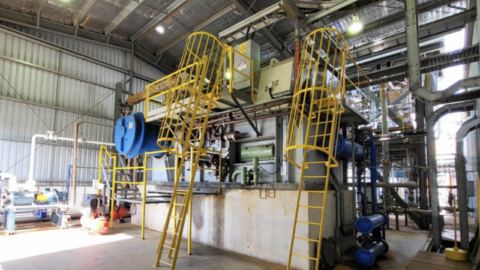Australia and Germany could benefit from swapping tactics when it comes to the energy efficiency of buildings, according to a collaborative report released by Australia’s Energy Efficiency Council (EEC) in June. Australia earns global praise for the ambitious energy efficiency standards of our commercial buildings, but our residential buildings are lagging far behind. Leading policy experts have suggested that borrowing from Germany’s model for incentivising the energy efficiency of residential buildings could help round out the performance of Australia’s own building stock.
Australian and German policy experts that recently took on the challenge of energy efficiency in residential and commercial buildings have urged further collaboration and knowledge-sharing between the two nations.
Despite German and Australian governments both placing value on energy efficiency as a smart means for emissions reduction, the two nations have completely different success stories when it comes to improving the efficiency of commercial and residential buildings.
The collaborative report, entitled Further, faster, together: Opportunities for collaboration between Germany and Australia on energy efficiency in buildings, published by Australia’s own Energy Efficiency Council, through funding from the German Federal Ministry for Economic Affairs and Energy (BMWi), explores the learnings each country can take from the others approach to energy efficiency.
First conceived by the Sub Working Group of the Australia-Germany Energy Working Group, the international collaboration presented its findings in June, with key recommendations for improving energy efficiency in buildings across both the residential and commercial sectors.
Residential buildings: learning from Germany
A central recommendation of the Energy Efficiency Council (EEC)’s report is for Australian policymakers to learn from the success of German residential building efficiency policies, including the German home energy rating system and generous efficiency financing incentives.
The EEC found that Germany has about 19 million residential buildings currently. Given that residential buildings accounted for over 27 per cent of total final energy consumption in Germany in 2017, it’s no wonder that Germany boasts a range of policies to drive energy efficiency in this sector.
With minimum efficiency standards that cover both new buildings and renovations, Germany is on the right track when it comes to residential building efficiency.
German efficiency incentives: confidence is everything
Since 2006, the German Development Bank (KfW) has offered a popular energy efficiency financing model to its residential sector, with incentives that are proportional to the achieved efficiency of each renovation or construction.
One mechanism behind the uptake of the German Development Bank’s financing options is Germany’s dedicated rating system for home loans: the Efficiency House, or Effizienzhaus.
According to the EEC, the Efficiency House benchmark is calculated fairly for each residential building, increasing confidence among financiers and householders alike.
The EEC also suggests that a winning decision in the German Development Bank’s financing strategy appears to be avoiding direct interaction with customers altogether.
By instead delivering efficiency incentives via charismatic financing partners, such as commercial and savings banks, the German Development Bank ensures that customers receive the pitch for efficiency incentives while in the very act of financing their new home or next major renovation.
Perhaps the last key factor underpinning Germany’s successful financing model is the nation’s creation of a ten thousand strong pool of certified energy consultants. Customers must engage with one of these energy consultants to receive any of the German Development Bank’s incentives, again ensuring that parties on both sides can be more confident that financial commitment is being matched with effective results.
Only up from here: Australia’s existing residential buildings
The EEC found that Australia’s estimated nine million existing residential buildings have shown stalled progress when it comes to energy efficiency, warranting close consideration of the policies implemented in Germany.
When it comes to minimum efficiency standards, Australia’s Nationwide House Energy Rating Scheme (NatHERS) does provide new homes with an energy efficiency rating based on thermal efficiency.
However, work is still ongoing to importantly expand NatHERS to cover existing homes. Policy makers have also noted that developing energy efficiency standards for rental properties could also help address stagnating energy efficiency in existing homes.
Even if NatHERS is expanded into a nationally recognised rating system that covers the efficiency of existing buildings, Australia could still learn a lot from the German Development Bank’s successful financing model, as well as Germany’s deployment of energy consultants, who boost confidence among both customers and financiers.
Interestingly, there have been recent signs of potential shifts towards the German model in Australia’s financing policy. In 2020, the CEFC, described by the EEC as Australia’s green bank, worked with a private retail bank, Bank Australia, to roll out the Energy Home Loan program, which discounts interest rates for homeowners that reach a certain degree of energy efficiency.
Bolstering the CEFC’s funding to set up programs with other retail banks, alongside the expansion of NatHERS to cover existing buildings, would set Australia on the right path for a more energy efficient residential building stock.
Commercial buildings: learning from Australia
A second recommendation of the EEC report relates to commercial building stock. In contrast to the national trends in residential buildings, the EEC found that Australian policies relating to commercial building efficiency are outperforming Germany’s efforts.
In fact, the EEC found that the energy intensity of Australian commercial buildings is about 70 per cent of the energy intensity found across Germany’s commercial buildings.
This statistic alone is grounds for German policymakers to closely consider Australia’s superior approach for achieving energy efficiency in commercial buildings.
Australia’s commercial building efficiency: the NABERS effect
The EEC report has found that energy efficiency in Australia’s commercial building stock is built upon a highly successful building performance rating system, the National Australian Built Environment Rating System (NABERS).
According to the EEC, NABERS-related buildings have saved “$1 billion in energy costs” since the scheme’s inception in 1998, with a key advantage being how “ratings are tailored to particular types of commercial buildings” to allow fair and competitive comparisons.
Importantly, clever government policies have continued to allow NABERS rating to become the effective means of pushing for efficiency in the commercial sector.
In 2005, the Australian Government restricted its procurement policy to buildings with an above-average NABERS rating, while in 2011, buildings over 2,000m2 were required to report their NABERS Energy score at point of sale or lease.
The EEC found that the success of Australia’s successful NABERS Energy rating system has sparked international interest, with both New Zealand and the United Kingdom adopting the rating system.
Germany’s commercial efficiency problem: no comparison, no competition
The EEC found that German commercial buildings are estimated to cause 47 per cent of emissions in the building sector, despite making up just 13 per cent of Germany’s total building stock.
The EEC concluded that a number of factors see Germany outperformed by Australia when it comes to commercial buildings. The Energy Performance Certificates (EPC) used to assess building performance in Germany are not easily comparable, in contrast to Australia’s competitive NABERS system.
Furthermore, European Union (EU) restrictions prevented commercial buildings from accessing German efficiency upgrade incentives until only recently. With the implementation of a NABERS rating system or equivalent, Germany could leverage market competition to ramp up the energy efficiency of its commercial building market.

















